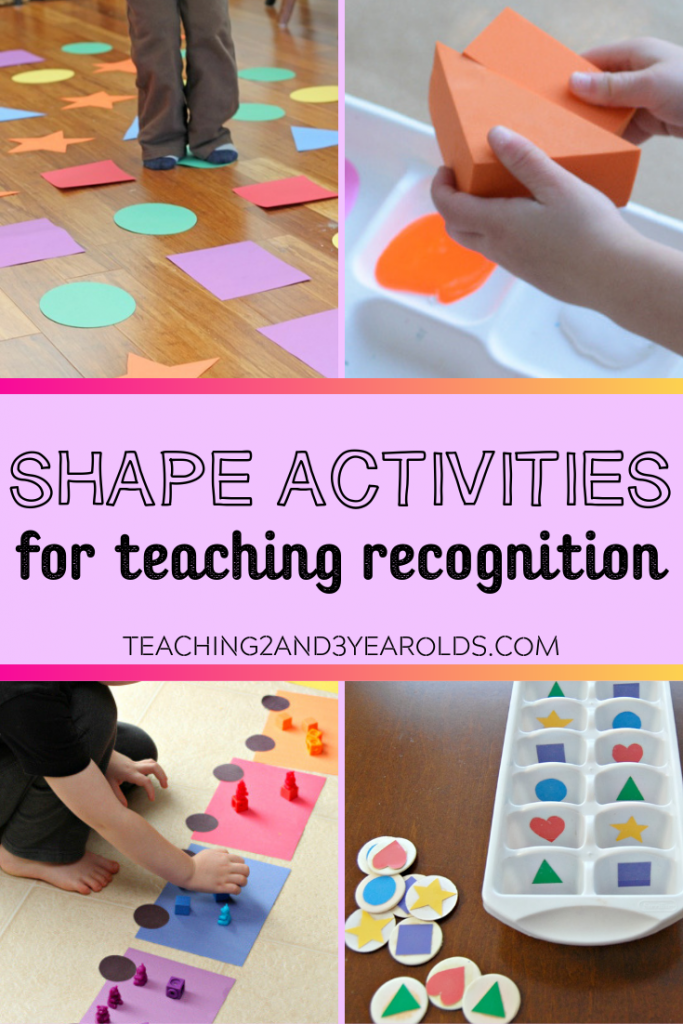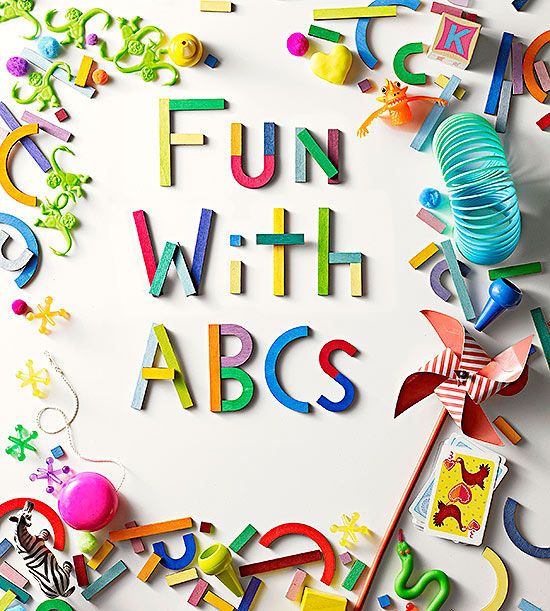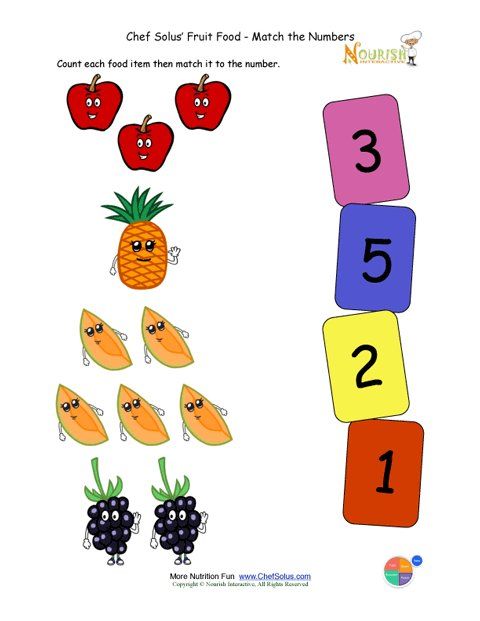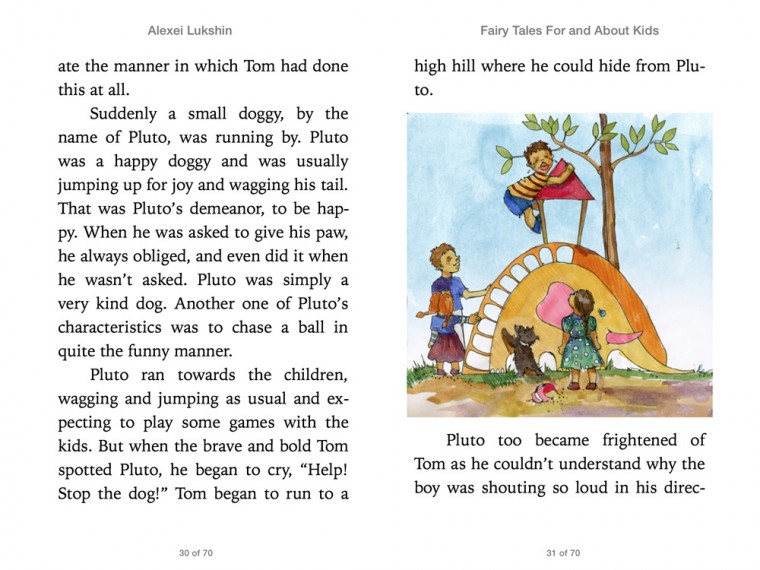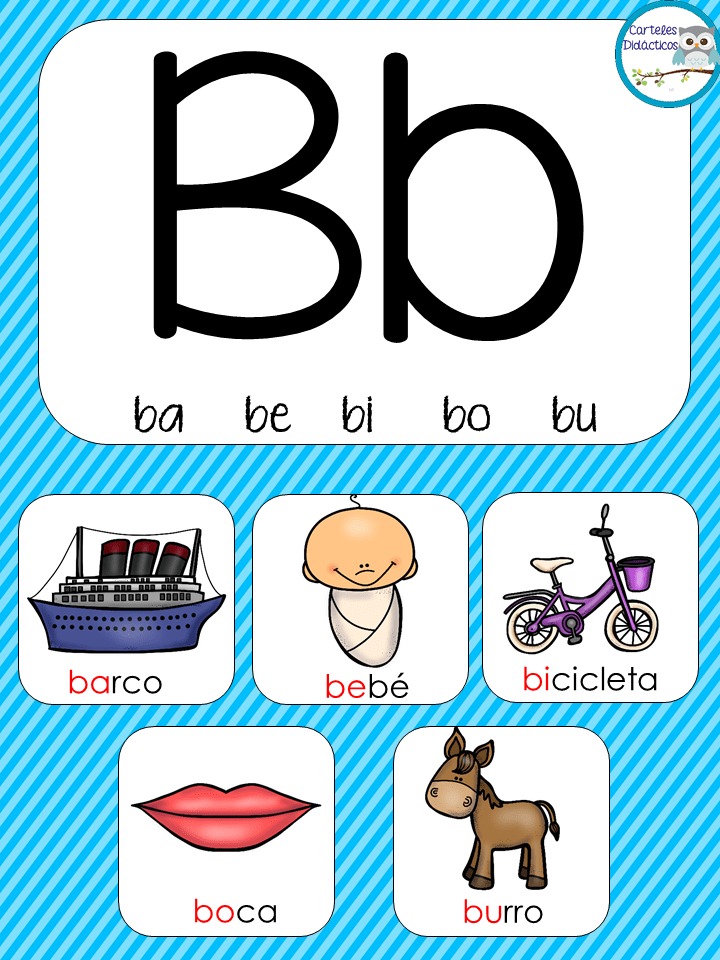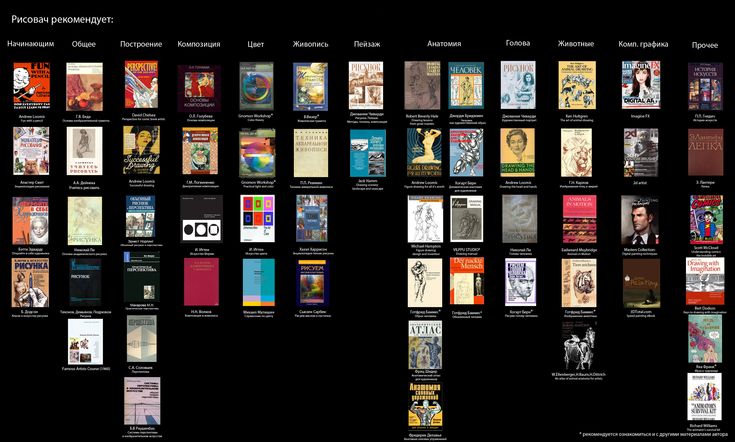How to teach preschoolers shapes
The Ultimate Guide to Teaching Shapes to Preschoolers
Here is everything you need to know about shapes for preschoolers! We’ll learn all about how to teach naming, constructing, and comparing 2D and 3D shapes – and why they’re important.
Giving preschoolers the tools they need to be successful in math is essential. A robust preschool math curriculum will include instruction in all five disciplines of math. This includes teaching preschoolers within the geometry discipline; aka: shapes!
What You Need to Know About Teaching Shapes to Preschoolers
There are so many fun, hands-on shape activities to do!The Importance of Learning Shapes in Preschool
Learning shapes is the most basic skill within the geometry discipline of math, so it makes sense that we spend plenty of time teaching our preschoolers about shapes. But there’s more to shapes than just their names.
Shapes are the foundation of geometry! In a preschool setting, geometry skills include identifying shapes, comparing shapes, differentiating between shapes, and creating shapes.
Learning shapes helps children identify and organize visual information. Learning shapes also helps children understand other signs and symbols, such as street signs or icons on a computer app. Teaching shapes to preschoolers encourages them to visualize and connect to the world around them.
Additionally, preschoolers apply what they know about numbers to each shape. How many sides does a square have? A triangle? How can we apply that knowledge to a circle which has no flat sides?
Can you make the three sides of a triangle?What Does Geometry Look Like in Preschool?
Geometry is a lot more than simply knowing shapes. It’s also about how to manipulate those shapes and how to fit them into different special concepts.
Geometry is one of the six primary strands of math that is considered foundational to later mathematical learning. Basic geometric principles connect directly to other mathematical concepts and skills, such as naming, constructing, comparing, and sorting, and children as young as early toddlers are developmentally ready to explore basic geometric principles.
During the toddler and preschool years, children amake connections in geometry by analyzing the properties of two and three-dimensional shapes. A box has corners and can be stacked, a ball is round and can be rolled.
Children practice composing by building, and decomposing by taking apart shapes. If a square is smooshed, it becomes a rectangle, if a circle is smooshed, it becomes an oval.
They interpret direction by using location terms such as “above” and “next to.” The amount of learning that takes place while playing with shapes, two-dimensional or otherwise, should not be underestimated.
Geometry Skills in Preschool Also Include the Following:
- Knowledge of shape names
- Knowledge of some shape attributes (a circle is round, a triangle is pointy)
- Completing 16-24 piece puzzles
- Stacking blocks
The Power of Spatial Awareness at an Early Age
Playing with shapes develops spacial relationships and knowledge of relative positions, and can require immense amounts of planning, such as the child who builds a tower like the one in her favorite storybook.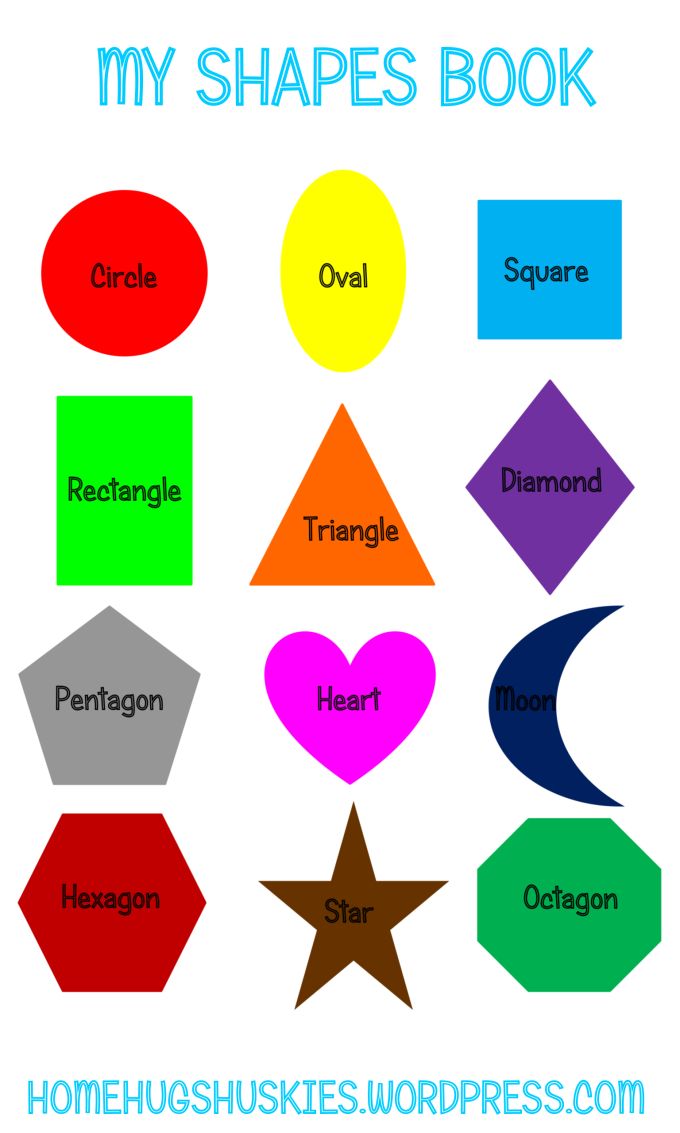
Preschoolers learn that they can combine two squares to make a rectangle. Or that triangles can be combined in different orientations to create a semi-circle.
What happens when we turn a shape upside down? Is it still the same shape even if it looks different? These skills develop spatial reasoning and spatial orientation which develops problem-solving and critical thinking skills.
For example, completing puzzles is a beginning geometry skill. Children are given a shape of some sort to fit into another shape, thus requiring them to manipulate the puzzle piece within a set space.
Sounds a bit like developing spatial awareness, right? It certainly is, and that’s an important skill for preschoolers as they are learning, even, how to manipulate their bodies to fit in the available space. Ever seen a preschooler try to sit on a specific mat during circle time and completely miss it? That’s not just a lack of coordination, but rather a spatial awareness skill that lacks development.
What Are Some Tips For Teaching Shapes in Preschool?
When teaching shapes in early childhood, it’s important to provide authentic and real-life practice with shapes as often as possible. Use engaging and interesting manipulatives, rather than strictly paper and pencil tasks. Here are some of our go-to’s!
Quality preschool shape activities can be found all over the classroom. There are hands-on, active opportunities to discuss, interact, and “play” with shapes in almost every corner of the classroom. The plates in the dramatic play area, the pattern on the baby doll’s clothes, and the squares on the calendar for each day of the week extend the shape exploration beyond the math center. Invite children to pay attention to their world and you’ll be amazed at what they detect!
Fun Ways to Teach Shapes
The more variety and the more hands-on learning activities you can offer, the better your preschooler or toddler will learn. For success in teaching shapes for prek and preschool, try some of these tips:
- Make a fun shapes sensory bin using shapes from around the house or classroom, foam shapes, or even cut out shapes from magazines.

- Use printable shape mats.
- Read high-quality books about shapes. See our suggestions below!
- Hide shapes around the room and seek them out.
- Hunt for shapes in real life and make connections between 2D and 3D shapes.
- Use manipulatives such as pattern blocks, geoboards, playdough, popsicle sticks, and various craft items to encourage shape creation and manipulation.
- Cut out shapes from construction paper and glue them together to make artwork or shape collages.
Teachers can help build on these concepts by asking questions such as:
- How do you know how many sides?
- Can you tell me more about that?
- How can we use these shapes in a different way? Can we turn the shapes or combine them to make a new shape?
- What happens if you try that again? Is it the same?
- Can we compare this 2D shape to this 3D shape? How are they alike? How are they different?
Children are naturally curious and might notice that triangles come in different variations and sizes but are still considered a triangle because they have three sides. Encourage creativity and provide opportunities for children to develop their spatial awareness skills by fitting different shapes together to make new shapes.
Encourage creativity and provide opportunities for children to develop their spatial awareness skills by fitting different shapes together to make new shapes.
Use Shape Picture Books!
Another amazing resource for teaching shapes to preschoolers is picture books! These age-appropriate books break down the various shape names, the difference between two-dimensional and three-dimensional, and the fun of finding shapes in our everyday life. Here are some of our classroom favorites!
Get the Daily Lessons in Our Shapes Preschool Unit
Free Shape Activities for Preschoolers
The Secrets to Teaching Math to Preschoolers
Teaching math is an enormous task, and setting the foundation for our youngest learners is a lot of pressure.
That’s because there is a lot that goes into teaching math. It’s comprehensive and systematic. And learning shapes is only one piece of the puzzle.
Mathematicians indicate there are five disciplines of math (like mentioned above) that should be taught, which are as follows:
- number sense – the development of a deep understanding of numbers and the number system, to compose and decompose numbers and understand their various relationships
- algebra – the understanding of patterns and relationships, including sorting and categorizing
- geometry – the understanding of spatial relationships, prepositional terms, and the properties of two and three-dimensional shapes
- measurement – the ability to make comparisons and order, understanding measurable attributes
- data analysis and probability – (you are here) understanding data as a means of sharing organized information and understanding that certain variables affect data
Get Daily Lessons in Preschool Mathematics
Remember how I said that teaching math to preschoolers is systematic? That means you can’t put the cart before the horse.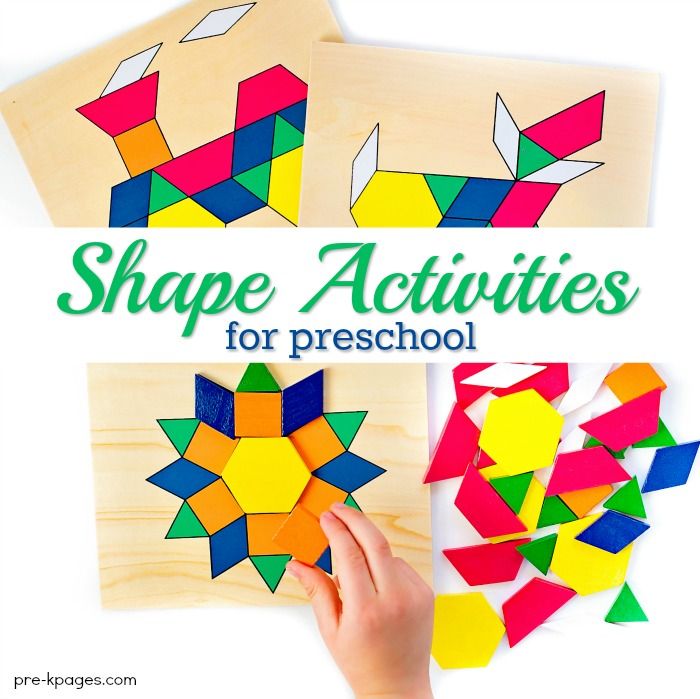 When it comes to teaching math, the skills need to be taught at the right time and in the right order.
When it comes to teaching math, the skills need to be taught at the right time and in the right order.
Make teaching preschool math easy with done-for-you Daily Lessons in the Preschool Mathematics Curriculum.
Lauren Vaughan
I am an educator, book enthusiast, and a stay at home momma to two precious and long-awaited littles. My degree is in Early Childhood Education and Curriculum and Instruction and I have spent the last 15 years working with young children. I feel very fortunate to have this time to watch my babies grow and I can’t wait to share my passion for learning and reading with you!
How to Teach Shape Recognition to Preschoolers with Fun Activities
You are here: Home / Math / How to Teach Shape Recognition to Preschoolers with Fun Activities
by Sheryl Cooper
Inside: How to Teach Shape Recognition to Preschoolers with Fun Activities with Free Printable
One of the areas we have to cover in our preschool assessments is shapes.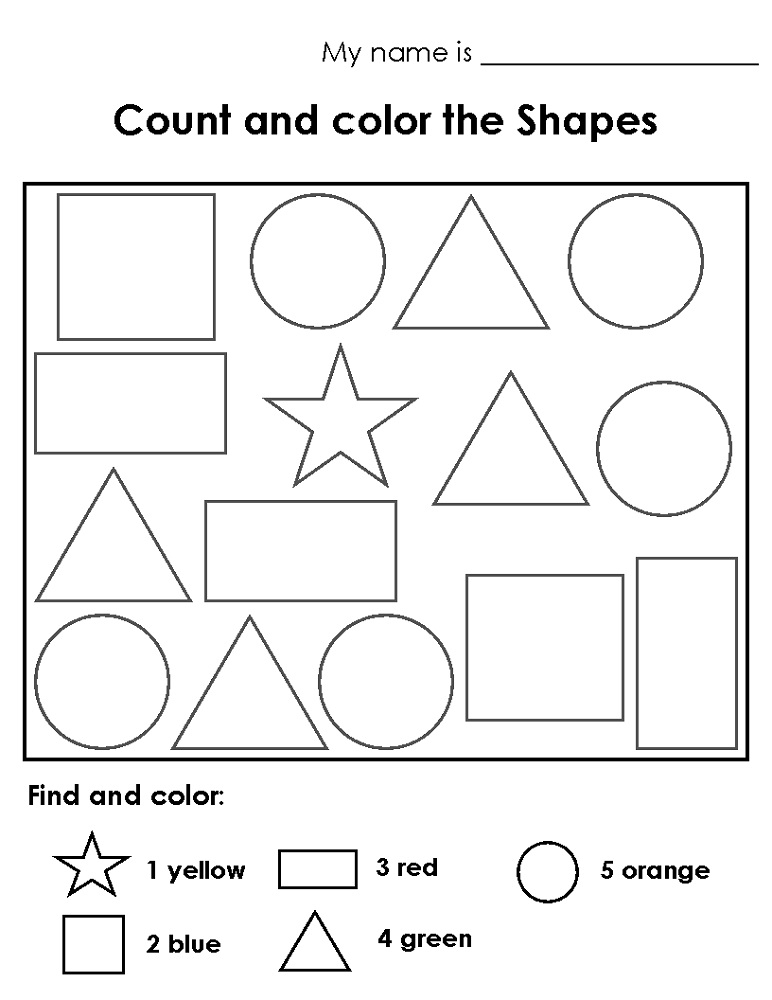 I am always looking for ways to build shape recognition skills, but I want them to be playful and authentically blend in with our other hands-on activities.
I am always looking for ways to build shape recognition skills, but I want them to be playful and authentically blend in with our other hands-on activities.
I decided to put together my own collection of shape recognition activities by doing a little searching.
After weeding out the results, I came up with over 16 ideas that I knew would be perfect. Not only are they fun, but they involve building other skills, too. I always love that!
So put away those flashcards, my friends. These fun activities will help your preschoolers learn to identify circles, triangles, squares, rectangles, and ovals.
👉 Bonus! I created a shape matching activity printable for your children. Scroll towards the bottom of this post to get the download.
I’ve also put together a collection of activities for math and literacy that are also hands-on and appropriate for this age group:
- Preschool Math Activities
- Preschool Literacy Activities
How to Teach Shape Recognition to Preschoolers with Fun Activities
Build shape recognition using toys.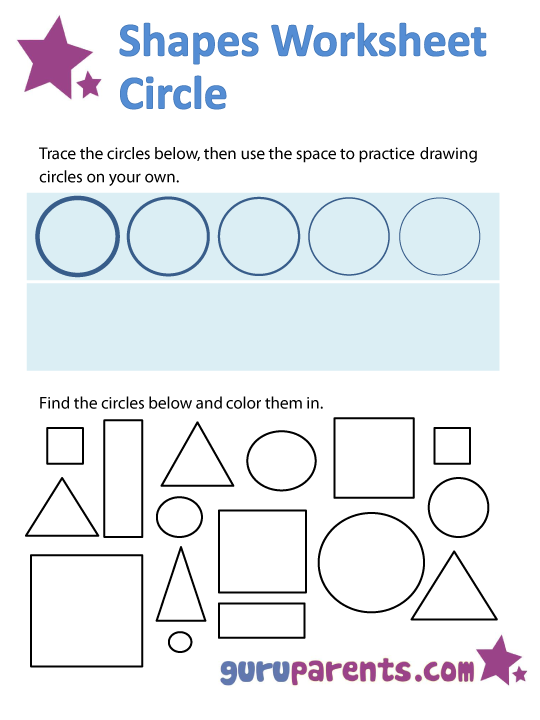
Mix colors while stamping circles from paper tubes.
Take apart your nesting toys to stamp shapes with paint.
Make a simple shape collage. (Homegrown Friends)
Go on a shape hunt at the playground (free printable included). (Buggy and Buddy)
Paint with different shapes of foam blocks. (Meri Cherry)
Make a shape puzzle using blocks you already have. (Twodaloo) (ETA: Unfortunately website is no longer running.)
Trace shapes on a chalkboard. (Hands On As We Grow)
Create a fine motor shape bin. (Stir the Wonder)
Make a shape sorting activity from an ice cube tray. (Mess for Less)
Make paper roads in different shapes and trace with cars. (Adventures of Adam)
Play shape hopscotch indoors! (Housing a Forest)
Use colored construction paper to create a train color sorting activity. (Mom Inspired Life)
More shapes activities:
Toddler Triangle Shapes Activity
15 Activities for Teaching Squares
Shapes Art Using Toys
Teaching Circles to Toddlers and Preschoolers
Going on a Circle Hunt Circle Time Activity
Here’s a simple shape matching activity for your children to try today! Click on the photo for the link to the PDF download:
More shape fun for your preschoolers!
These clever little rhymes teach children how to draw the shape and what objects in real life look like that shape.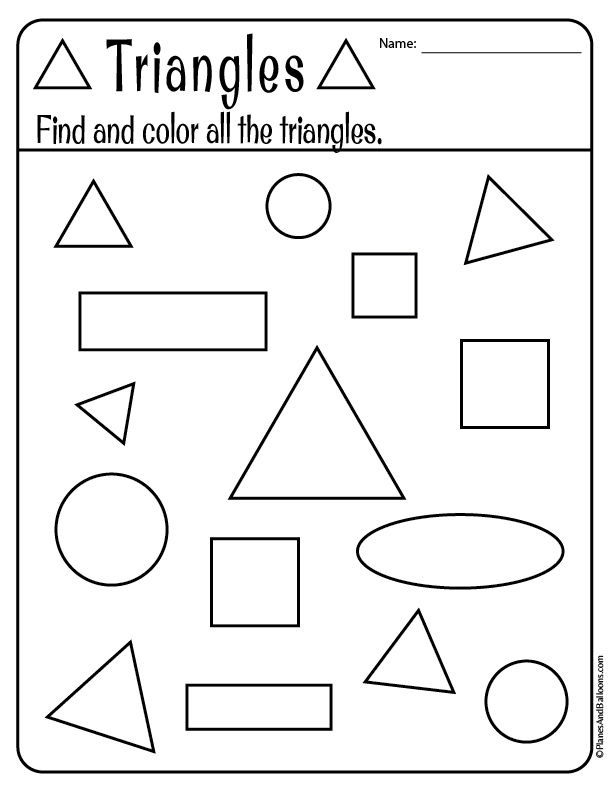
Along with 8 shape rhymes, you’ll also receive the audio version of the chants and printable shape booklets!
Click here for more information.
FREE CIRCLE TIME PLANNER!
Get your FREE circle time planner as a gift when you subscribe to my free weekly newsletters.
Here is my Privacy Policy
Filed Under: Math, preschool, Toddler Math Tagged With: preschool, printable, shapes
About Sheryl Cooper
Sheryl Cooper is the founder of Teaching 2 and 3 Year Olds, a website full of activities for toddlers and preschoolers. She has been teaching this age group for over 20 years and loves to share her passion with teachers, parents, grandparents, and anyone with young children in their lives.
Reader Interactions
Learning Geometric Shapes: Games for Preschoolers
One of the important aspects of the development of mathematical concepts in preschoolers is the study of the basics of geometry. In the course of acquaintance with geometric shapes, the child acquires new knowledge about the properties of objects (shape) and develops logical thinking. In this article, we will talk about how to help a preschooler remember geometric shapes, how to properly organize games for teaching geometry, and what materials and aids can be used to develop a child’s mathematical abilities.
In the course of acquaintance with geometric shapes, the child acquires new knowledge about the properties of objects (shape) and develops logical thinking. In this article, we will talk about how to help a preschooler remember geometric shapes, how to properly organize games for teaching geometry, and what materials and aids can be used to develop a child’s mathematical abilities.
At what age can one start learning geometric shapes?
Many parents are wondering if young children need to get acquainted with geometric shapes. Experts believe that it is optimal to start classes in a playful, relaxed form from the age of 1.5. Until this age, it is appropriate to pronounce to the child the names of the shapes of objects that the baby meets in real life (for example, “round plate”, “square table”).
Introducing the child to geometric shapes, be guided by his reaction. If your baby started to show interest in them at an early age (by playing with the sorter or looking at pictures), encourage his curiosity.
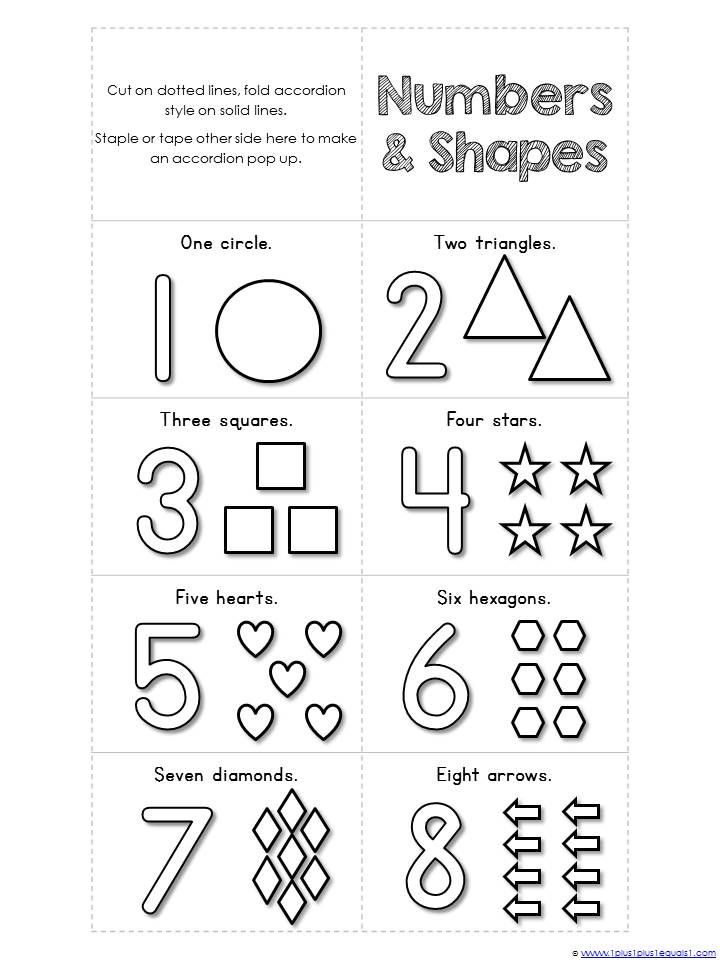
At the age of 2, the baby should be able to distinguish between:
- Circle;
- Square;
- Triangle.
By the age of 3 you can add:
- Oval;
- Rhombus;
- Rectangle.
At an older age, a child can memorize such shapes as a trapezoid, a pentagon, a hexagon, a star, a semicircle. Also, children visiting the Constellation Montessori Center get acquainted with geometric bodies with interest.
How can I help my child remember geometric shapes?
Teaching a child geometric shapes should take place in stages. You need to start new figures only after the baby remembers the previous ones. The circle is the simplest shape. Show your child round objects, feel them, let the baby run his finger over them. You can also make an application from circles, mold a circle from plasticine. The more sensations associated with the concept being studied, the child receives, the better the baby will remember it.
Three-dimensional figures can be used to get acquainted with the forms. It can be made by a designer, a sorter, lacing, frame inserts. Since at an early age the visual-effective type of thinking is most developed, various actions with figures will help to remember them better.
How children of different ages perceive geometric figures
The operations that a child can perform with geometric figures and how he perceives shapes depend on the age of the baby. In accordance with age characteristics, the following stages of training can be distinguished:
- In the second year of life, the baby is able to visually recognize familiar figures and sort objects according to shape.
- At 2 years old, a child can find the desired shape among a number of other geometric shapes.
- By the age of 3, babies can name shapes.
- At the age of 4, a child is able to correlate three-dimensional figures with a flat image.
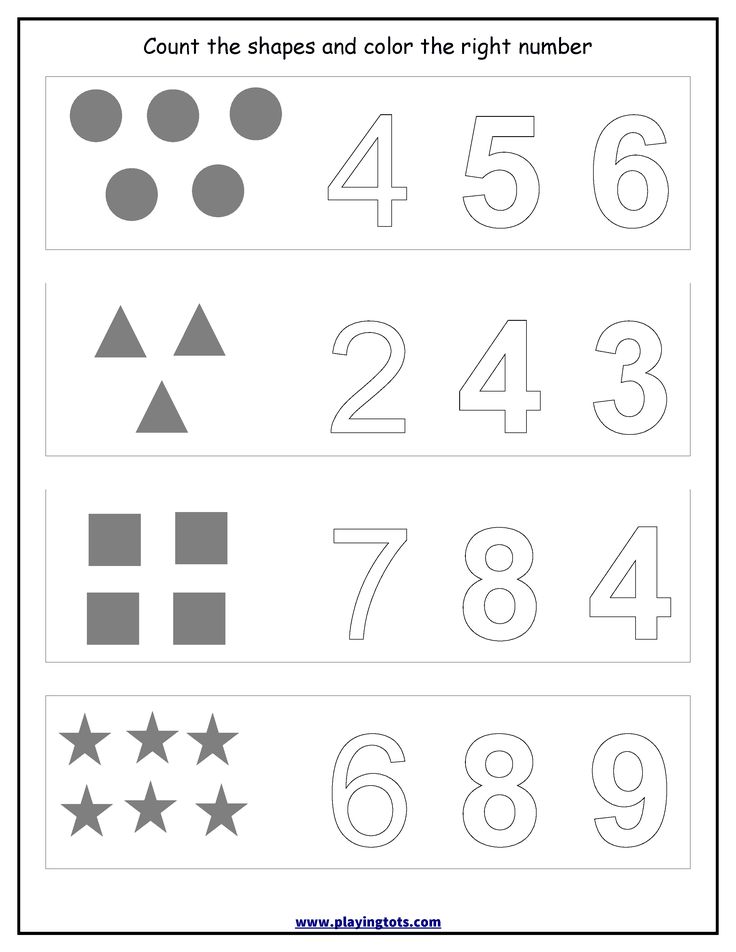
- At senior preschool age (and sometimes even earlier) you can start studying geometric bodies (ball, cube, pyramid). Also at this age, the child can analyze complex pictures consisting of many shapes.
Regardless of the child's age, try to pay attention to the shapes of the surrounding objects and compare them with known geometric shapes. This can be done at home and on the go.
Games for learning geometric shapes
For a child to be interested, learning geometric shapes should take place in a playful way. You should also select bright and colorful materials for classes (you can buy them in a store or do it yourself). Here are some examples of games and tutorials for learning geometric shapes:
- Sorting. Games with a sorter can be started from the age of 1. Invite the child to find its window for the figure. So the child will not only memorize geometric shapes, but also develop fine motor skills, thinking and spatial representations, because in order for the part to fall into the hole, you need to turn it at the right angle.
 You can also sort any other items, such as building blocks, Gyenesch blocks, or counting material.
You can also sort any other items, such as building blocks, Gyenesch blocks, or counting material. - Insert frames. In fact, this manual is similar to a sorter. For each geometric figure, you need to find its place.
- Geometric lotto. To play, you will need a field with the image of geometric shapes and handout cards with each figure separately. A child can take small cards out of a chest or bag, and then look for their place on the playing field. This game also perfectly trains the attention of the baby.
- Geometric appliqué. Cut out various geometric shapes from paper and, together with your child, make a picture out of them (for example, you can make a Christmas tree from triangles, a house from a square and a triangle).
- Drawing (including stencils).
- Modeling.
- Laying out figures from counting sticks.
- Geometric mosaic.
- Laces with geometric shapes.
- Card games.

- Guess by touch.
- Active games. Draw geometric shapes on the pavement with chalk. Ask the child to imagine that the figures are houses that you need to run into on a signal. Next, you name a geometric figure, and the child runs to it.
In addition, educational cartoons can be used to study geometric shapes. Here is one of them:
Conclusions
Learning the basics of geometry at preschool age is an important part of developing a child's mathematical and sensory representations. Acquaintance with the figures should occur gradually (first, simple figures - a circle, a square, a triangle). To keep your child interested, study geometric shapes in a playful way. Your assistants in this can be such educational aids as insert frames, mosaics, lotto, sorters, sets of geometric shapes and bodies, stencils.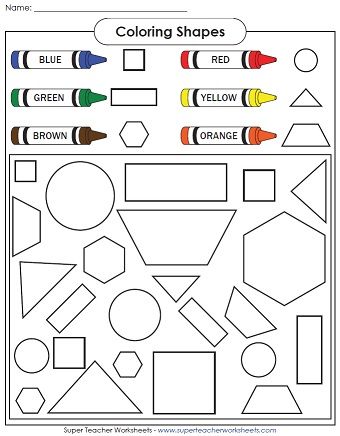 You can also study geometric shapes on the street: just talk to your child about what you see around and what shapes these objects look like. Then the kid will definitely learn to distinguish geometric shapes and remember their names.
You can also study geometric shapes on the street: just talk to your child about what you see around and what shapes these objects look like. Then the kid will definitely learn to distinguish geometric shapes and remember their names.
Conclusion
Montessori environment has been specially created for the comprehensive and harmonious development of each child in the children's center "Constellation". In the process of free work in it, children not only get acquainted with the basics of geometry, but also develop their cognitive processes, fine motor skills, learn to write, read, and count. In addition, the Montessori environment gives the child the opportunity to fully demonstrate independence and responsibility. We will be glad to see you and your baby at our center!
Prepared by a Montessori teacher
Malysheva Evgenia
Easily and quickly learn geometric shapes with children
Why teach a small child geometric shapes? Surely, many parents do not even think about this issue, simply paying tribute to fashion and teaching mathematics to the baby almost from birth.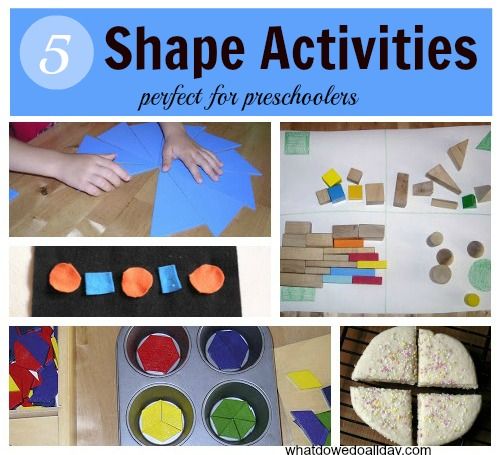 Meanwhile, geometric shapes for children, their timely study play a big role in the knowledge of the environment, introducing one of the main properties of objects - shape. This is necessary for the development of logical thinking, spatial representations, and the improvement of mathematical abilities. That is why it is important to start getting acquainted with geometric shapes as early as possible, reinforcing the knowledge of the children with exciting tasks in everyday life.
Meanwhile, geometric shapes for children, their timely study play a big role in the knowledge of the environment, introducing one of the main properties of objects - shape. This is necessary for the development of logical thinking, spatial representations, and the improvement of mathematical abilities. That is why it is important to start getting acquainted with geometric shapes as early as possible, reinforcing the knowledge of the children with exciting tasks in everyday life.
What a child should know about geometric shapes
Therefore, the home familiarization of the child with the forms should not take place separately, but in the system of sensory (sensual) education. Best of all, the baby will remember the shape when he simultaneously considers the color, size, purpose of the object, since knowledge is actively used in a variety of activities and is better remembered.
- Experts say that purposefully teaching a child geometric shapes at home should begin in the third year of life.
 At this time, the children have a motor and tactile experience of studying the world around them. They know how to speak, they are distinguished by curiosity and the desire to explore everything, they strive for something new. That is why, for the further formation of knowledge in children, work is needed to replenish ideas about geometric shapes: a circle, a square, a triangle. In an exciting game (not on purpose!) the baby gets acquainted with the ball (ball), cube (cube).
At this time, the children have a motor and tactile experience of studying the world around them. They know how to speak, they are distinguished by curiosity and the desire to explore everything, they strive for something new. That is why, for the further formation of knowledge in children, work is needed to replenish ideas about geometric shapes: a circle, a square, a triangle. In an exciting game (not on purpose!) the baby gets acquainted with the ball (ball), cube (cube). - Four - five-year-old children, in addition to triangular, square, round shapes, recognize rectangular and oval. It is believed that at the age of 5 children already master geometry, therefore, by the next age stage, they must clearly name a circle, oval, triangle, square, rhombus, distinguish them and find them around them. Preschool children should be able to analyze and generalize the shape of objects, noting the main properties, and even solve logical problems by comparing shapes. For example, in the popular game "What are the similarities and differences between a circle and a square, a square and a rectangle, a circle and an oval?".
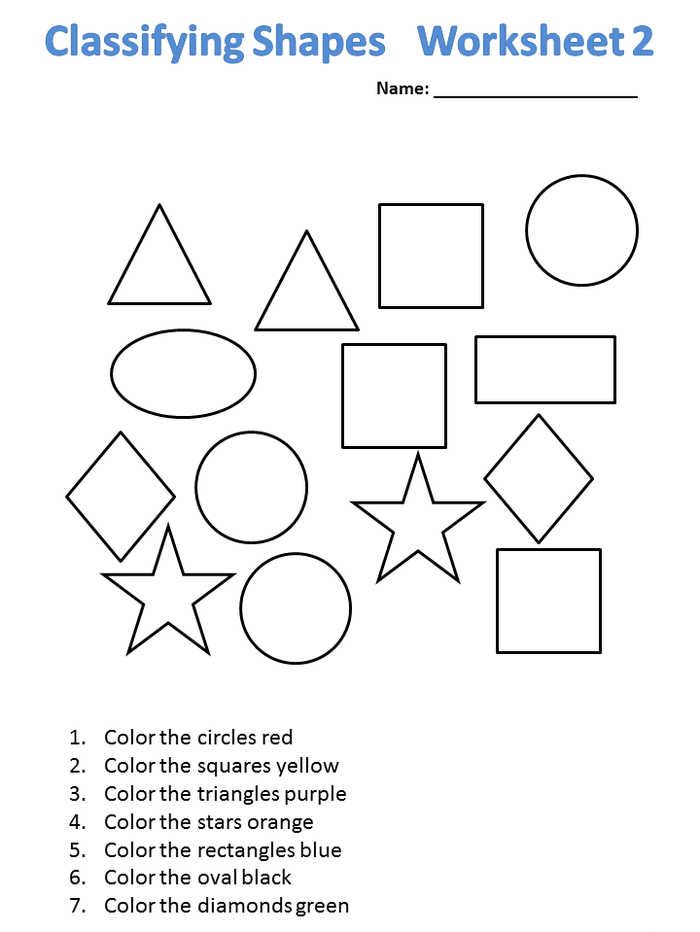
- Older preschool children already know the names of all the figures well, they are introduced to new ones: planar (polygon, trapezoid) and volumetric (ball, cube, cylinder and cone). For school education, children need to learn how to divide and assemble shapes in different ways (cutting and folding), solve problems - puzzles, for example, "Do you know how to make a square, rectangle, triangle out of two parts?", "How many squares (circles, rectangles ) on the image?".
Learning Geometric Shapes with Toddlers: Basic Rules
Important: How to teach a child to name and distinguish geometric shapes easily and quickly! To do this, you need to follow certain rules. With chaotic, inconsistent learning, the baby can confuse the figures, not see their similarity and difference.
- Teachers insist that the main rules for home schooling should be systematic, consistent, and accessible. It is not necessary to torture yourself and the child with any abstruse tasks and manuals, it is enough to use developing books, toys (designers, cubes, cars, doll utensils) and the familiar environment (furniture, household items, dishes).
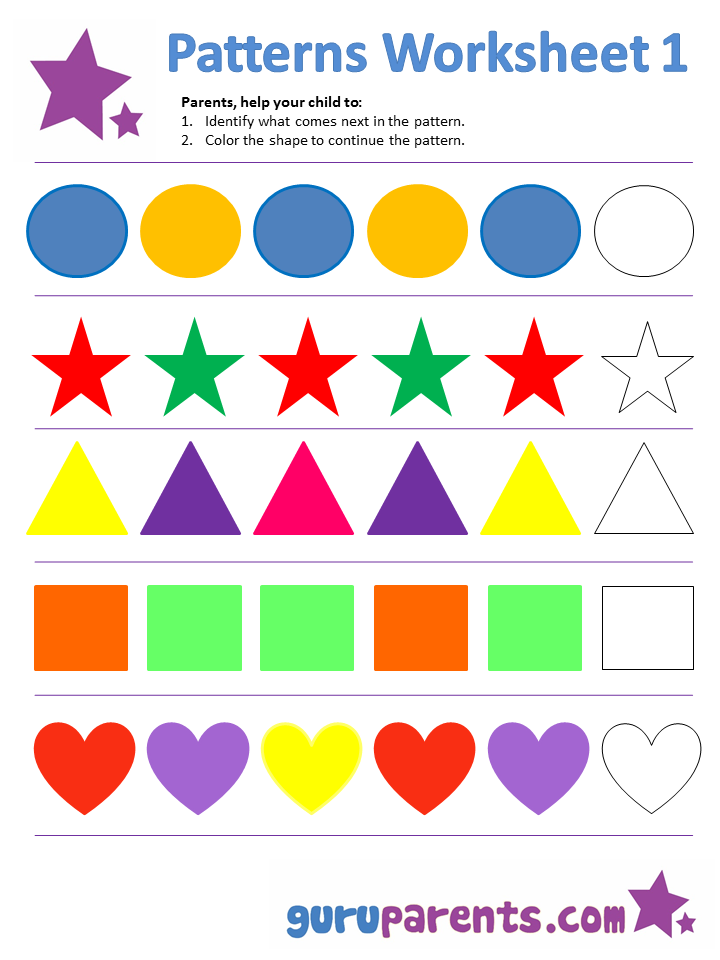
- Acquaintance with new figures must be carried out in research activities: invite the baby to feel, circle the contour with a finger, “draw” in the air, put the figures together, roll, stick them into the holes.
- A child will quickly master new material if he practically acts with it in games, creative activities, looking at and reading books, and household processes. For example, when introducing a baby to a square, you can invite him to find square objects in the environment: a seat by a highchair, a handkerchief, a face of a cube, a napkin. During a walk, ask what shape the bench in the park is, the wall of the house, mom's bag, the ball that the older guys play. At the same time, the adult himself clearly and clearly names all the geometric shapes that the baby encounters.
- It is good if adults use rhymes, fairy tales, riddles, cartoons, the heroes of which are geometric shapes, when teaching. You can not only read them, but also draw to the rhythm of the verse.
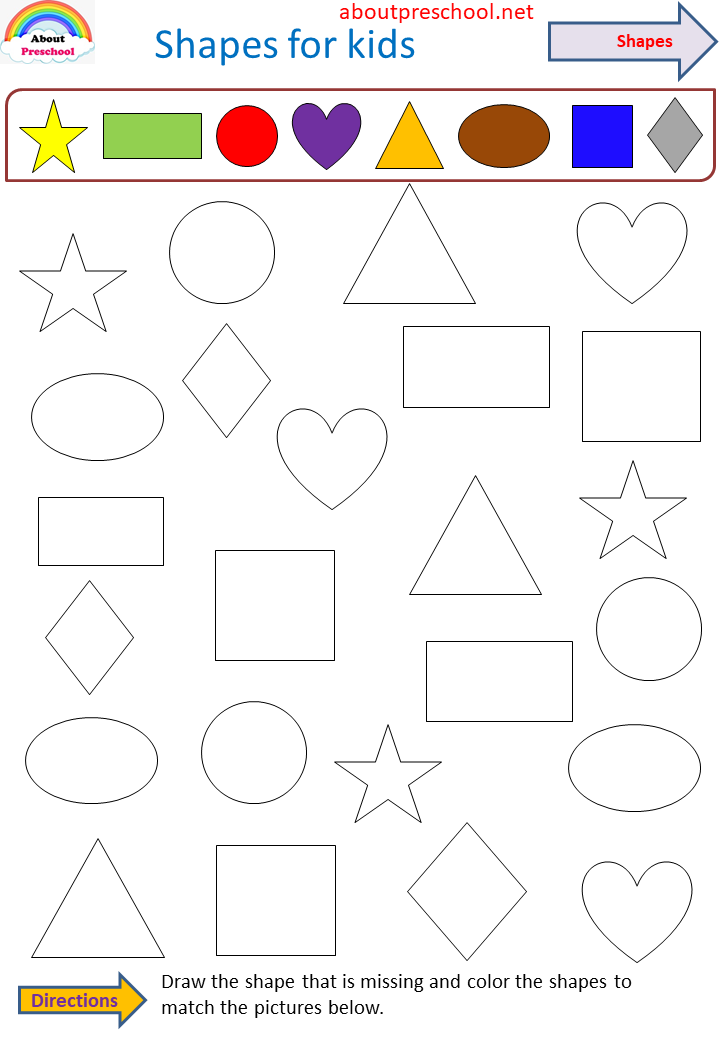 These techniques will make learning exciting, help to activate the processes of attention, thinking, speech.
These techniques will make learning exciting, help to activate the processes of attention, thinking, speech.
Riddles in verse
I have no corners and I look like a saucer, a plate and a lid, a ring and a wheel. Who am I, friends? Name me (circle).
He has been my friend for a long time, every corner in him is straight. All four sides are the same length. I am glad to present it to you. What is his name? (square).
Look at the figure and draw in the album, three angles, three sides connect with each other. It turned out not a square, but a beautiful one (triangle).
There is such a circle - a very strange appearance. The circle became flattened, it turned out suddenly (oval).
We stretched the square and presented it at a glance. Who did he look like or something very similar?
Neither brick nor triangle - became a square (rectangle).
Fairy tale "Two brothers" (an adult draws to the rhythm of the verse)
A long time ago in a dark forest in a figured hut there lived two brothers, two squares.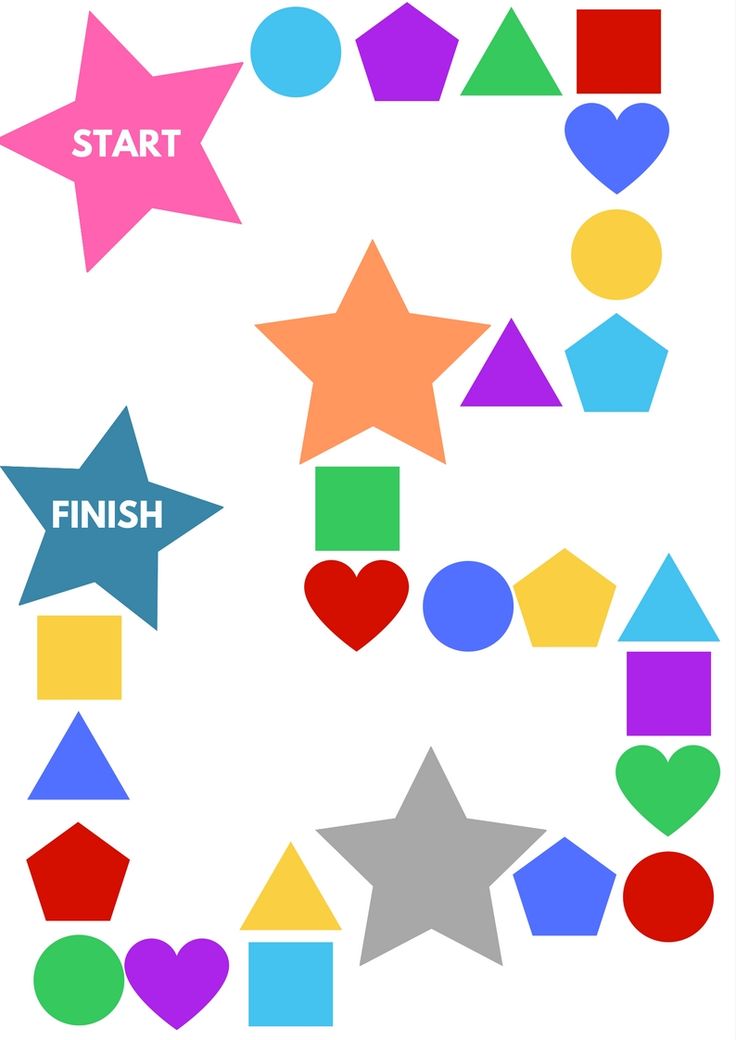 And they were twins. See for yourself:
And they were twins. See for yourself:
See in the picture - each has 4 sides, 4 corners and 4 tops.
Somehow the first square was walking among the bushes, knocking on the path with four corners.
And the animals say: “Who is this? The first square or its brother, the second square? How similar they are!
Remember in the picture: 4 sides, 4 corners and 4 tops.
The square is tired of being confused with his brother, and he decided to change, to turn into another figure.
He took scissors and cut off four corners for himself. Turned into a circle and rolled along the path.
And now the brothers live wonderfully, now it is difficult to confuse the brothers:
One rides along the paths, the other walks on four corners - four legs.
Two brothers are still friends - a circle with a square!
Important: Peculiarities of children's perception of geometric figures are not at all the same as in adults. For example, an adult sees objects according to their shapes (a saucepan is a cylinder, a window is a rectangle).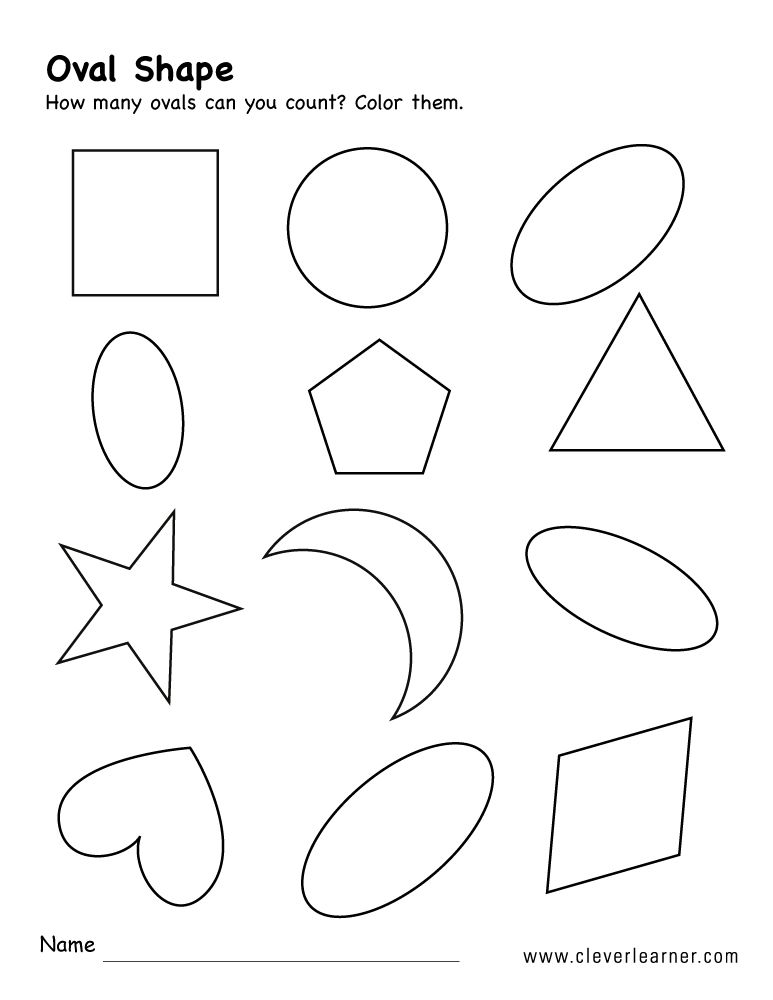 The child, on the contrary, first objects the shape (a square is a kite, a triangle is the roof of a house, a circle is a ball, several circles are glasses, beads). With proper training, he begins to abstract from objects and perceive a familiar figure in the environment, for example, a glass as a cylinder (cylindrical), a roof as a triangle (triangular), a ball as a ball (round).
The child, on the contrary, first objects the shape (a square is a kite, a triangle is the roof of a house, a circle is a ball, several circles are glasses, beads). With proper training, he begins to abstract from objects and perceive a familiar figure in the environment, for example, a glass as a cylinder (cylindrical), a roof as a triangle (triangular), a ball as a ball (round).
Playing with geometric shapes!
Teachers remind that preschoolers receive basic knowledge about geometric shapes in kindergarten, and homework is aimed at consolidating what they learn. Therefore, the best means at home will be the game, as the main activity of the kids. It is in the game that, unobtrusively, easily and quickly, the child will learn all the names of the figures, learn to compare and distinguish them. Among educational games for learning geometric shapes, board games are the most popular. They can be played in the evenings, during family leisure, made part of any home activity, entertainment.
"What's hidden"
The classic game is understandable and accessible even to a two-year-old baby. An adult lays out images of familiar figures in front of the child: a circle, a square, a triangle. Since there must be at least five cards, figures of different colors and sizes are used for the quantity, for example, two squares - large and small, two triangles - blue and yellow, one circle. Consider them with the child, discuss, make sure that he understands what figures are in front of him and can name them correctly. Then the baby closes his eyes, the adult hides one of the figures and asks what is hidden. With age, the number of figures increases, new ones are added to the old ones.
“With one word”
The game "geometric figures" is aimed at developing in children a generalization of the same type of figures. An adult needs to prepare circles, squares and triangles of different sizes and colors. The preschooler must distribute the presented figures into groups, regardless of color and size, call them a generalizing word, for example, all squares.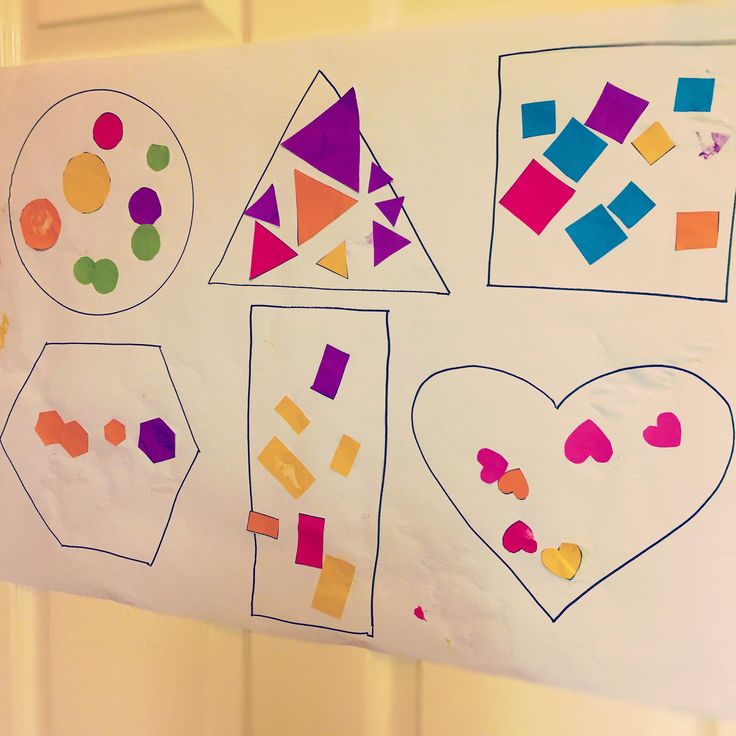 Alternatively, you can complicate tasks by offering to group shapes only by color or size.
Alternatively, you can complicate tasks by offering to group shapes only by color or size.
Wonder Pouch
Games like the "wonderful bag" are well known to children of kindergarten age. They are useful in that they give an idea of the contours of objects, teach examination by touch and exercise in distinguishing shapes. An adult prepares a bag with objects of various shapes, for example, a cube, a ball, a ball, a brick, a conical pyramid. The player examines them and names the shape of the toy they want to get. To complicate the task, older children are invited to find a specific form, for example, "Find a round toy."
“Magic Glasses”
Preliminary preparation of improvised glasses made of thick paper of various shapes: round, square. The game is interesting for all the guys, it helps to expand their understanding of geometric shapes, to find objects of a certain shape in the surrounding space. For example, a child puts on round glasses and looks for everything round around him: a plate, the bottom of a vase, a ceiling lamp by a chandelier, a carpet, grandmother's glasses. For each correct match, the player is awarded a chip, and then receives an incentive prize at the end of the game.
For each correct match, the player is awarded a chip, and then receives an incentive prize at the end of the game.
"Patches - patches"
For a lesson on fixing ideas about geometric shapes, you need a selection of pictures depicting various objects in which there are "holes" - unpainted places of different shapes, for example, a dress has a round hole, a boot has a square one. Among the different "patches" the child chooses the right one and connects it with the object. It will be interesting if an adult himself prepares images for the game, for example, cuts out things from paper (sweater, skirt, trousers, boots, hat). As a variant of the game of "patches - patches", you can purchase a didactic game of "Velcro", which are very similar in rules and content
“What's broken”
This task will help teach children to notice what form is missing in the depicted object, develops attention. For the game, you can use pictures, appliqué from cut out parts, building material.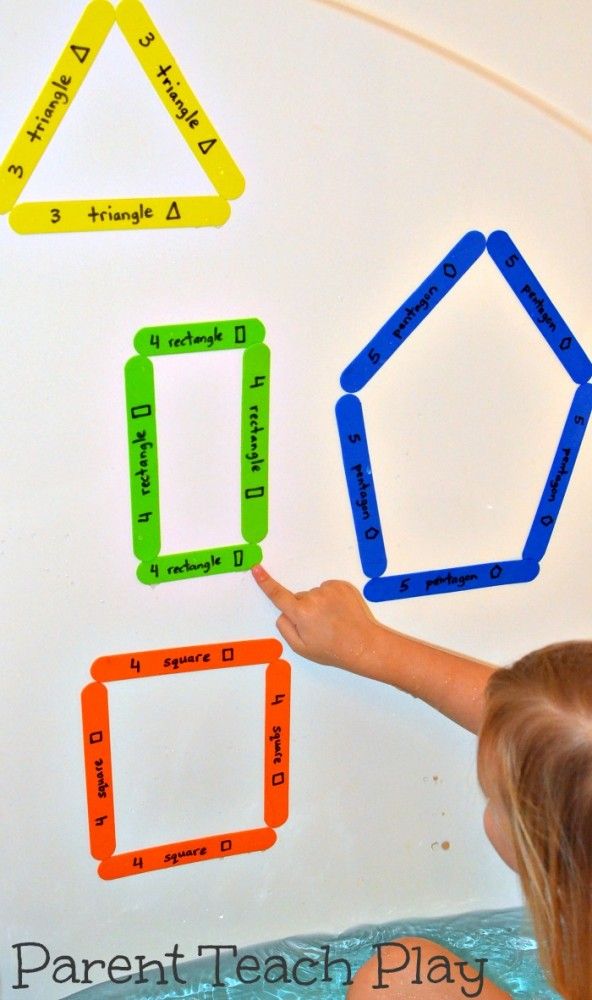 The main thing is that the object should consist of parts of a geometric shape. For example, an adult lays out the application "house", where the details are a triangle - a roof, a rectangle - a wall, a square - a window, a small rectangle - a door, a circle - a window in the attic, a quadrangle - a pipe. The child carefully examines the image and closes his eyes, the adult removes any detail, mixing it with any others. You need to guess what broke at the house and "fix" by finding the missing part. In the future, you can complicate the task by not immediately adding a certain form or removing two forms at the same time. If this is a drawn image, then the child paints on the missing details, for example, a circle is a wheel by a car, rectangles are windows by a turret.
The main thing is that the object should consist of parts of a geometric shape. For example, an adult lays out the application "house", where the details are a triangle - a roof, a rectangle - a wall, a square - a window, a small rectangle - a door, a circle - a window in the attic, a quadrangle - a pipe. The child carefully examines the image and closes his eyes, the adult removes any detail, mixing it with any others. You need to guess what broke at the house and "fix" by finding the missing part. In the future, you can complicate the task by not immediately adding a certain form or removing two forms at the same time. If this is a drawn image, then the child paints on the missing details, for example, a circle is a wheel by a car, rectangles are windows by a turret.
"Playing with sticks"
An interesting task for middle and older preschoolers, at the same time develops motor skills and the ability to make geometric shapes. If there are no counting sticks, you can use matches or toothpicks, prepare them first, cut off the sulfuric head or sharp ends so that the baby does not get hurt.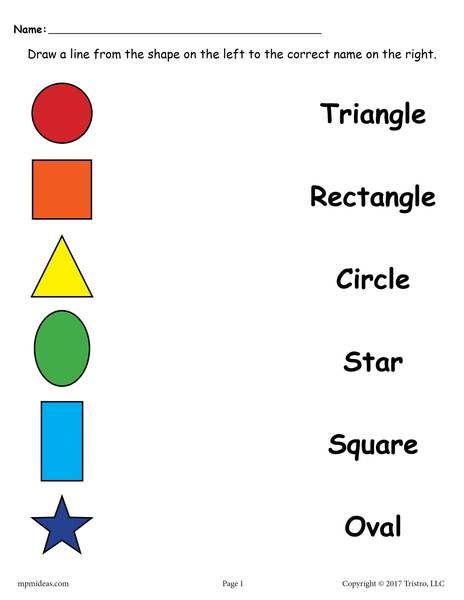 Such a task can be carried out in the form of a competition during family leisure, "who will make the figure the fastest?", "Who has the most difficult figure?". Then mark the winner with a prize. At some point, it must be a child. An adult, for example, may note his original solution or a carefully and accurately laid out figure.
Such a task can be carried out in the form of a competition during family leisure, "who will make the figure the fastest?", "Who has the most difficult figure?". Then mark the winner with a prize. At some point, it must be a child. An adult, for example, may note his original solution or a carefully and accurately laid out figure.
"What was useful to the artist in the picture"
For older preschoolers, you can use the original task of looking at pictures, which not only reinforces the name of the figures, but also develops visual perception, the ability to see different forms in an unusual setting. An adult selects illustrations of the appropriate content, which the artist draws using geometric shapes. Then he invites the preschooler to look at the picture and find familiar shapes. If any of them are still unfamiliar to a preschool child, be sure to pay attention to them and tell what they are called, what objects are similar to them. Complicating the game, you can calculate how many geometric shapes it took to depict the picture.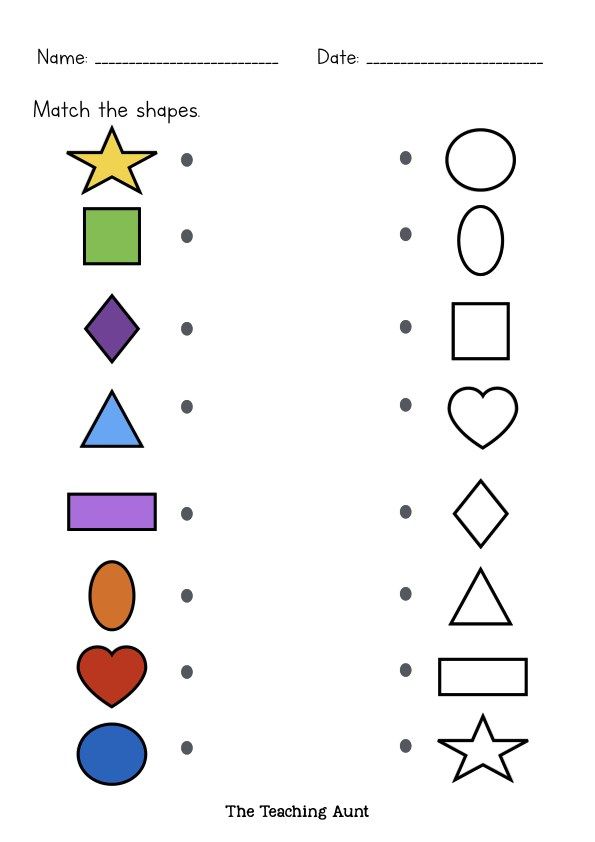
"Geometric Lotto"
A classic task for introducing children to geometric shapes teaches them to compare the shape of an object with a geometric figure, to select images based on a standard. To get a competitive moment, interesting for the kids, it is better to play with the whole family. The rule is classic: on large cards - images of different shapes, for example, an oval, a circle, a triangle. The facilitator says the name of the item on a small card, for example, an apple, a cucumber, a handkerchief, a TV. Players look for the shape of the named object on their card and cover it with the corresponding picture. The player who quickly and correctly closes the card wins.
"Geometric Mosaic"
Such an educational game will help children to consolidate their ideas about geometric shapes. In addition, it will teach preschoolers to transform them, focusing on the standard (sample), will help creative imagination. The rules of the game are simple and accessible to children of any age, for older ones - the number of details increases, the plots become more complicated.